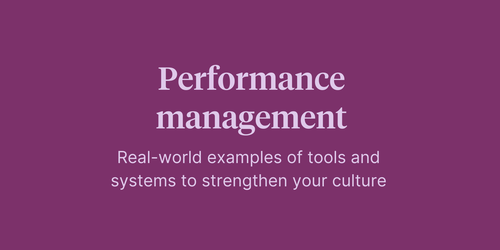
Article

Written by

HR Content Creator, BambooHR
It doesn’t take conscious thought to tell your heart to beat or your lungs to facilitate breathing. They’re going to work their magic automatically. In other words, they got this—leaving you free to focus on walking without tripping and not eating more ice cream than your body can handle.
Just like many parts of our bodies function with or without conscious thought, your organization’s company culture exists independent of your efforts to shape it. However, when you start consciously shaping culture, you can use it as a competitive advantage. Innovative organizations identify this reality and work to ensure their culture benefits them.
You might wonder, “Sure, but what is company culture?” After all, there are seemingly endless definitions of company culture.
The specific definition you cling to is usually of lesser significance as long as you take the time to define three essential aspects of your company culture:
Once you have a firm grasp on what your company culture is, you want to work tirelessly to grow it, protect it, and then use it to grow your business. Otherwise, like a person who does nothing to improve their body’s physical well-being, you’re headed for a painful future.
With this in mind, let’s discuss two ways to use your culture as a competitive advantage.
Below, we explore how you can drive recruiting and retention by putting your company culture first.
With guidance and foresight, strong company culture leads to strong employer brands. Company culture is how you operate internally. Employer brand is how the outside world views your culture. Giving the outside world authentic snapshots of the positive aspects of your culture makes recruiting efforts much easier.
The reasons are simple. Culture gives recruiters a helpful guide when determining a recruit’s fit. Prospective recruits who would fit into your culture are far more likely to immediately feel a connection, want to be a part of the culture and apply to join your team. Conversely, a clear culture helps you funnel out people who aren't a good fit for your organization, which benefits your retention efforts.
The key in every instance is that your employer brand aligns with your actual culture. You do yourself no favors when a new employee joins the company only to find that the culture is not what they thought it was. They will eventually leave and may even become detractors who harm your reputation.
In today’s ultra-competitive market, company culture is often the difference between hiring top talent and not.
For those with thriving cultures, Glassdoor and other review sites essentially serve as free advertising. For those with sickly cultures, these review sites make it almost impossible to hide cultural flaws for long. Companies that use reviews to their advantage give themselves a significant competitive advantage.
When considering organizational culture and the competitive advantages that come from it, at the very top are loyal and engaged employees. There is no better recruiting source than a referral from a loyal employee. Not only are they more willing to recommend your organization to their friends, but they are also more likely to refer only friends they know will make positive contributions to the organization.
As organizations improve how they hire people for cultural-add, the logical conclusion is that those people will remain with the company. Company loyalty is still very important in retention efforts. And while it may seem obvious that using your authentic culture as a recruiting tool leads to increased retention among those recruited employees, these efforts can improve retention in other ways.
For example, when the company culture is clearly defined for employees, they develop a greater sense of purpose because they know where their work fits into the organization's bigger picture. And when employees have a purpose, they are more productive and happy.
When your culture becomes a pillar of your business, it can guide you to make other sound decisions that lead to improved retention. Consider employee benefits – experts agree that benefits can positively impact retention efforts since they show employees how much they’re appreciated.
However, be careful not to confuse the order of benefits and culture. Company culture should drive your benefits strategy, and every perk should be founded on your previously-defined culture.
For example, a big part of BambooHR’s culture is work-life balance. One of our values is to “enjoy quality of life.” With this value already in place, our leaders came up with what we call Paid Paid Vacation. Essentially, employees are given $2,000 once a year to use on vacation, and they can only use the money on vacation costs (e.g., airfare, hotels, food, etc.).
Not only does the benefit accomplish its design of improving the quality of life for Bamboo employees, but it helps to create a company culture of gratitude and loyalty. It’s hard to go on fun vacations that you probably wouldn’t have gone on otherwise without being very thankful to your employers.
As you can probably imagine, this benefit is an excellent recruiting tool. However, it’s important to remember that the root of this benefit is our culture, and its efficacy depends on how closely aligned it is with our authentic culture.
Recruiting and retention are just two of many areas where company culture can give an organization a competitive advantage, but together they illustrate how crucial culture is to an organization’s long-term success. When planning out your recruiting efforts or brainstorming ways to improve retention, remember to start with your culture to ensure you stay competitive.
